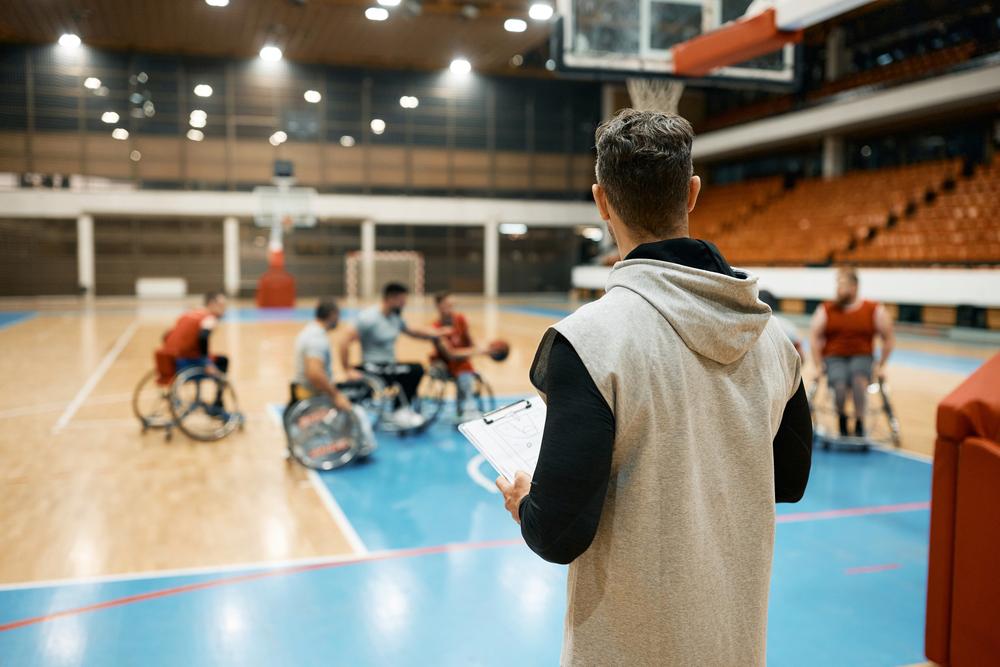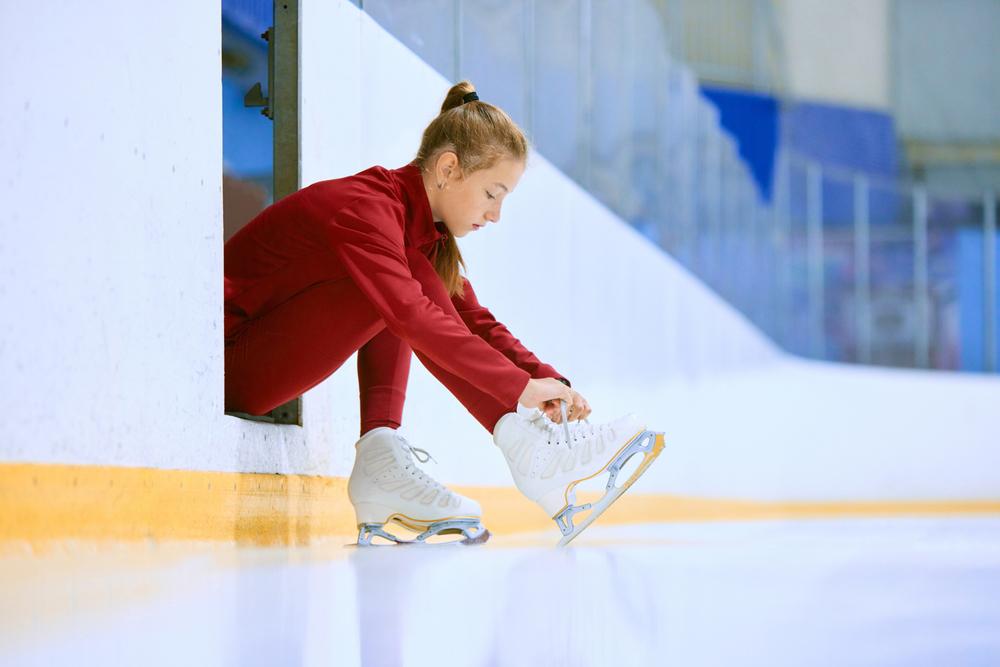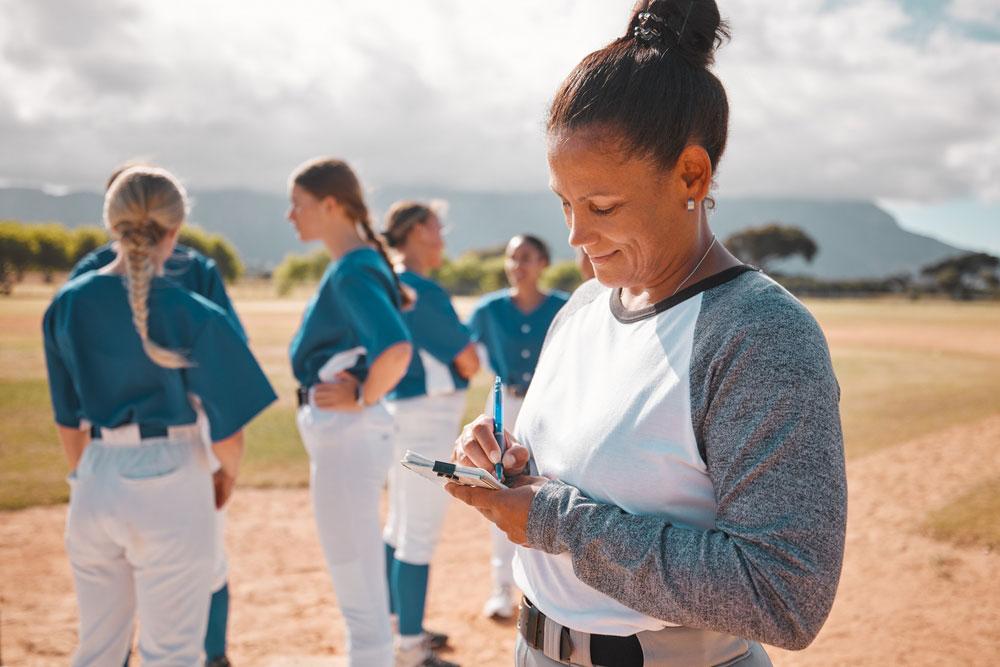Content Warning: This article contains mentions of eating disorders.
As an athletic director at your school, your role reaches far beyond simply scheduling games and handling logistics. You are capable of creating and maintaining a positive TrueSport-focused culture that revolves around good sportsmanship, character development, life skills, and healthy performance.
Here, Vicki Vaughan, Director of Athletics at The Colorado Springs School and a longtime contributor to TrueSport curriculum, shares how she has worked to shift culture within athletic programs throughout her career.
1. Understand the TrueSport pillars
 TrueSport is based on three primary cornerstones: sportsmanship, character building and life skills, and clean and healthy performance. These principles support a healthy youth sport culture, as well as lifelong athletes, coaches, and families. All ages are impacted by these principles, as there are many lessons to learn about sportsmanship and healthy performance within every sport across all age groups. “No matter the age, every athlete needs to be reminded about how to be a good sport with winning and losing,” states Vaughan.
TrueSport is based on three primary cornerstones: sportsmanship, character building and life skills, and clean and healthy performance. These principles support a healthy youth sport culture, as well as lifelong athletes, coaches, and families. All ages are impacted by these principles, as there are many lessons to learn about sportsmanship and healthy performance within every sport across all age groups. “No matter the age, every athlete needs to be reminded about how to be a good sport with winning and losing,” states Vaughan.
2. Provide support for coaches
These three pillars seem simple as coaches are expected to promote good sportsmanship and keep athletes healthy. But coaches are not always equipped with the knowledge or skills to ensure healthy performance. For instance, some are not experts in nutrition or sports psychology, so it is important to help coaches attain the education they need to support the whole athlete. “As an athletic director, I’m always trying to assess what content is needed for coaches as well as the athletes,” Vaughan says. “You can’t assume that everyone has an understanding of things like athlete nutrition, concussions, performance imagery, or injury prevention.” Athletic directors should help connect coaches to experts who are better equipped to teach athletes about managing performance anxiety, enhancing performance, or recovering from injury.
3. Look at current values
It is also important to consider how the school’s current set of values aligns with the TrueSport culture. For example, if “winning a state title” is the only value or goal for teams, and outcome-based goals are the primary standard for success, those focuses are likely to conflict with emphasizing good sportsmanship or using teachable moments to build life skills. “Coaches and parents alike need to understand that sportsmanship, life skills, and skill development are more important than any win,” Vaughan says. “And that means aligning the values of the school and department to reflect that. This also requires hiring coaches that share our philosophy and coach to the process rather than the outcome.”
4. Set the tone early on
 The first step in creating a strong TrueSport culture is setting a standard for the environment you expect all coaches to promote. As athletic director, it often feels like you are being pulled in dozens of directions at once, balancing multi-sport schedules while also hiring new coaches, organizing transportation, communicating with parents, or setting up venues for game day. “You’re often the first to arrive and the last to leave,” Vaughan says. “But it’s important to set the tone by taking time to meet with the entire coaching staff, athletes, and parents to develop a set of core principles that align with the TrueSport values at the beginning of the season or school year.” It is also a best practice for athletic directors to publicize an athletic handbook that clearly defines these values and expectations for all coaches, athletes, and parents.
The first step in creating a strong TrueSport culture is setting a standard for the environment you expect all coaches to promote. As athletic director, it often feels like you are being pulled in dozens of directions at once, balancing multi-sport schedules while also hiring new coaches, organizing transportation, communicating with parents, or setting up venues for game day. “You’re often the first to arrive and the last to leave,” Vaughan says. “But it’s important to set the tone by taking time to meet with the entire coaching staff, athletes, and parents to develop a set of core principles that align with the TrueSport values at the beginning of the season or school year.” It is also a best practice for athletic directors to publicize an athletic handbook that clearly defines these values and expectations for all coaches, athletes, and parents.
5. Align coaches with TrueSport culture
When outcomes and wins are not your program’s primary goal, verify that the coaches understand and are aligned. A coach should be comfortable pulling a star athlete if they exhibited unsportsmanlike behavior, without fear of retribution if the team loses. By setting the expectation that healthy performance is more important than winning, you can also encourage coaches to identify athletes who may be at risk for overtraining or developing an eating disorder. Vaughan adds that more athletes than ever are exhibiting signs of depression and reduced mental wellness, another important health risk for coaches to navigate.
6. Stick to the rules
The most difficult part of maintaining a TrueSport culture, Vaughan admits, is when a game’s outcome is on the line. For example, the school may have a policy that receiving a red card in a soccer game means the athlete won’t play in the next game. “It can be tempting to change that rule or loosen that penalty for the sake of winning,” she says. “But as a TrueSport school, it’s important to stick to those principles. Athletes need to understand that a bad decision has consequences for themselves and others. These are life lessons that cannot be compromised for the sake of a win.”
7. Adapt to changing cultures
 Creating a TrueSport-oriented culture is not a one-and-done proposition. An athletic department’s culture will naturally shift over time, and not always in positive ways. Vaughan notes that after two pandemic years, for example, her department’s culture shifted. She’s had to provide support for the coaches and work to reengage athletes who drifted away from sport. “What we were doing before doesn’t necessarily work now, and we have had to think outside the box to motivate our athletes to play sports again,” explains Vaughan. Creating a lasting TrueSport culture means constantly revisiting your core principles and ensuring that all coaches and athletes understand the program goals and are invested in the process.
Creating a TrueSport-oriented culture is not a one-and-done proposition. An athletic department’s culture will naturally shift over time, and not always in positive ways. Vaughan notes that after two pandemic years, for example, her department’s culture shifted. She’s had to provide support for the coaches and work to reengage athletes who drifted away from sport. “What we were doing before doesn’t necessarily work now, and we have had to think outside the box to motivate our athletes to play sports again,” explains Vaughan. Creating a lasting TrueSport culture means constantly revisiting your core principles and ensuring that all coaches and athletes understand the program goals and are invested in the process.
_____________________
Takeaway
Building a TrueSport culture requires coaches, athletes, and families who are committed to the same TrueSport values while focusing on the process rather than the outcome. When athletic programs are designed to emphasize the TrueSport pillars, young people have healthier experiences and are better prepared for life.



